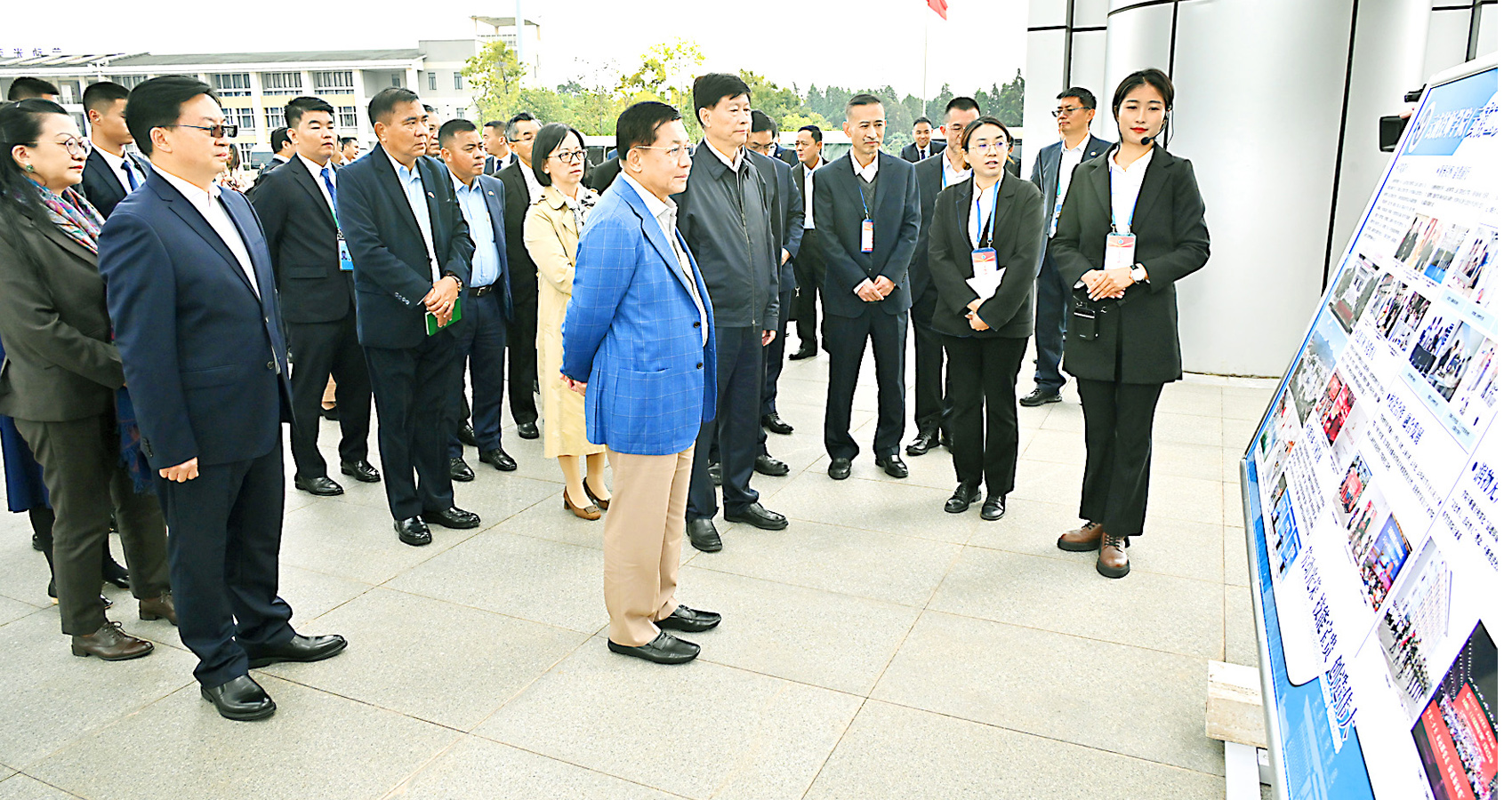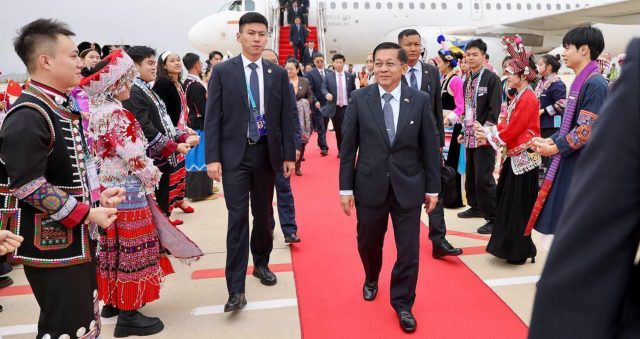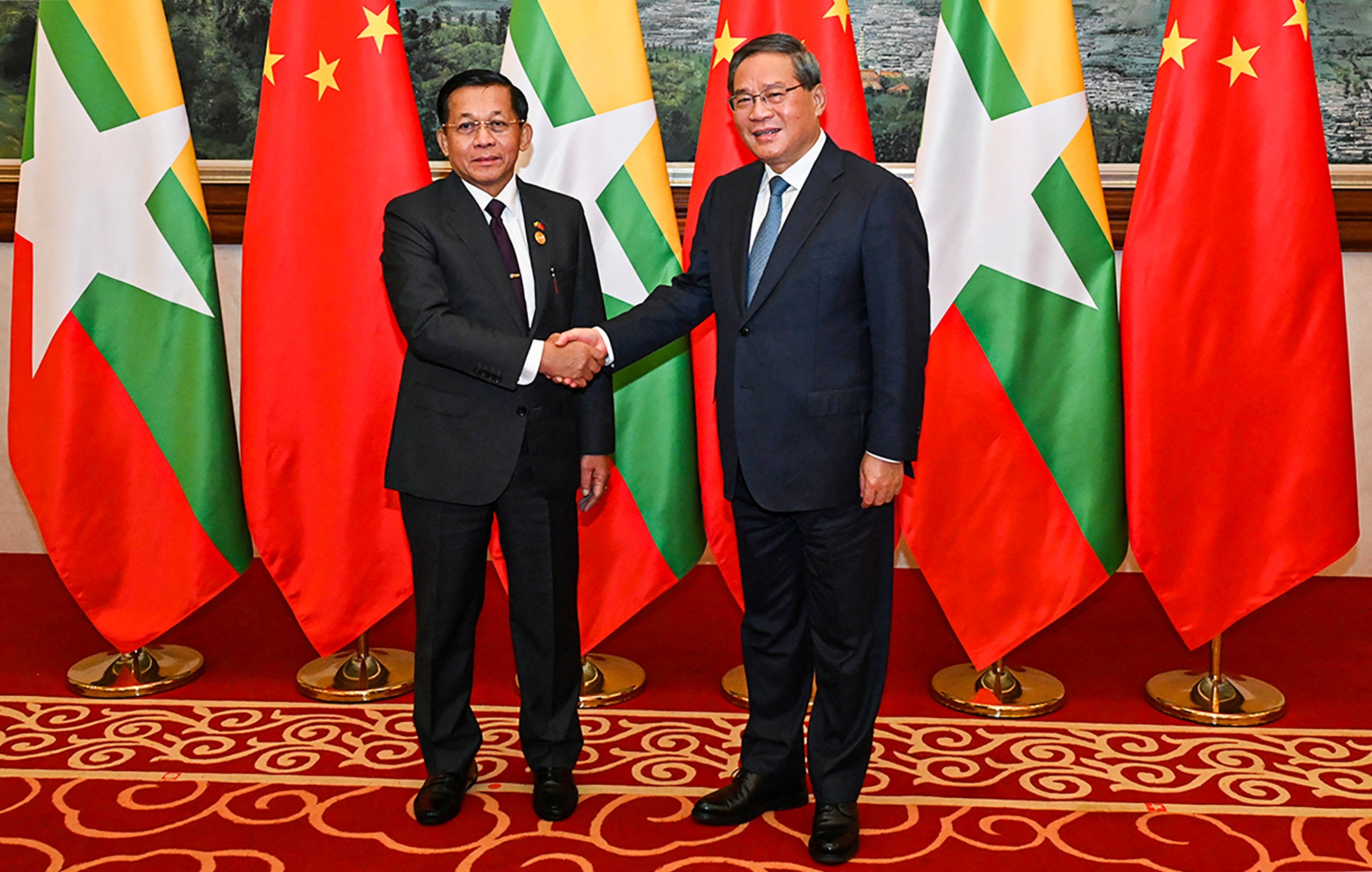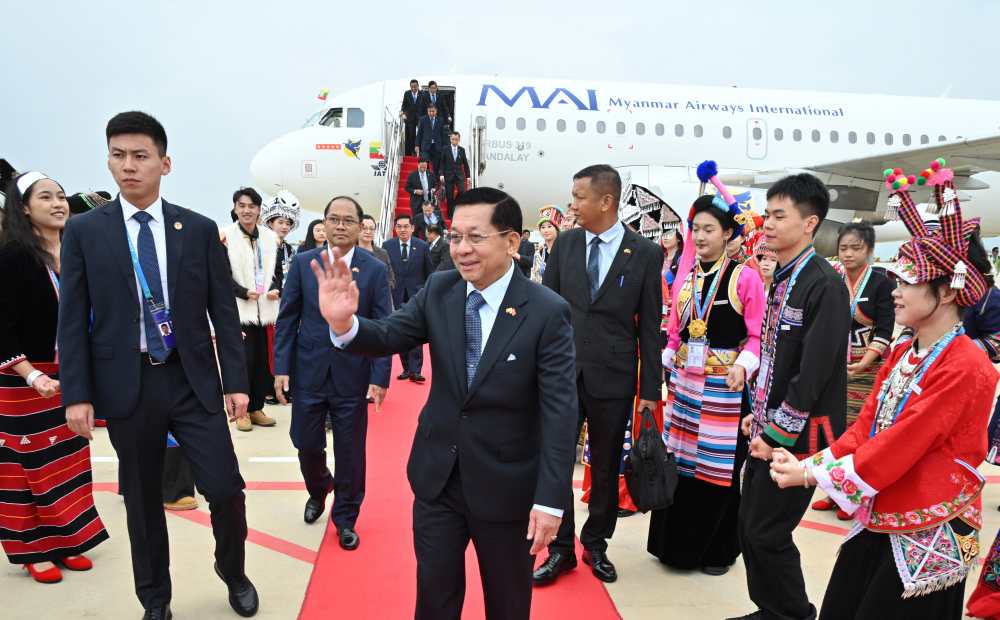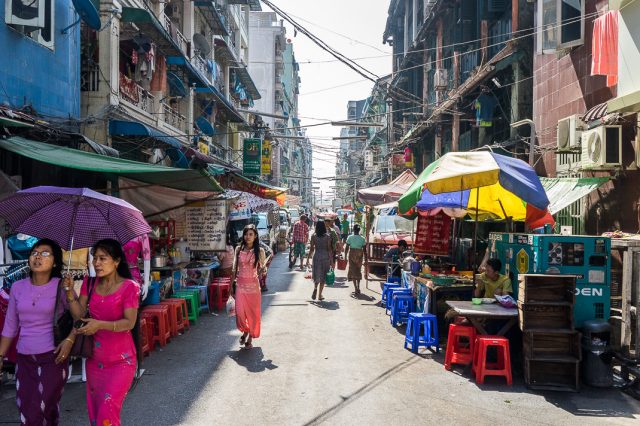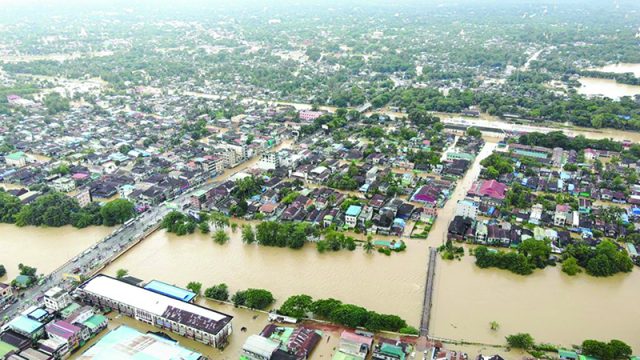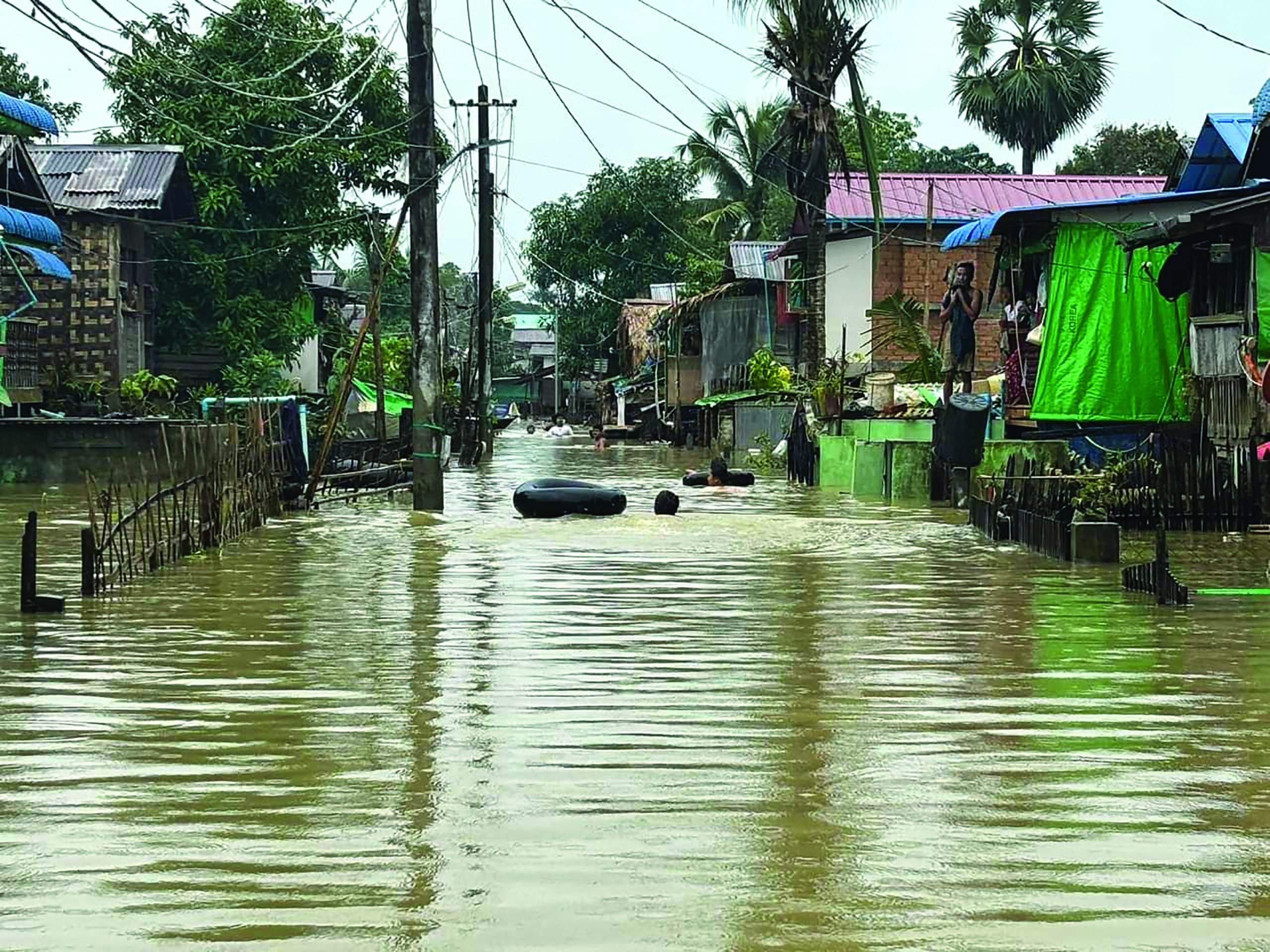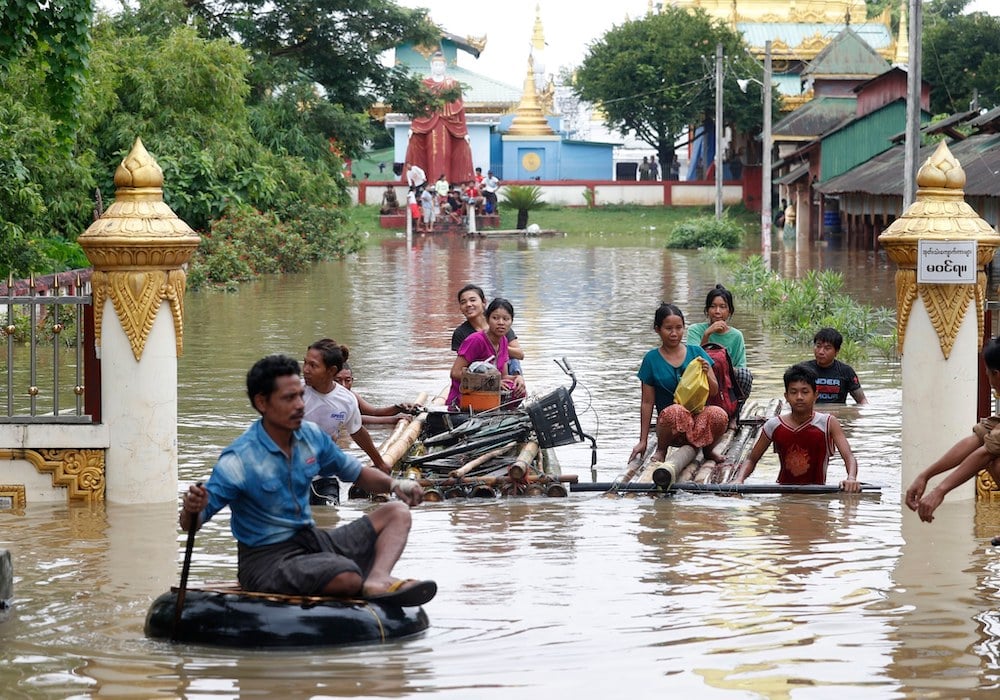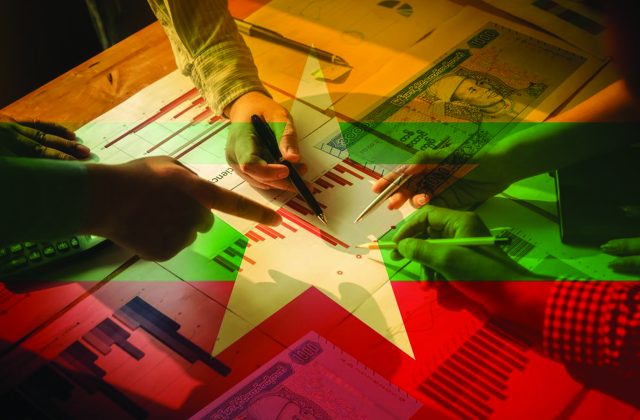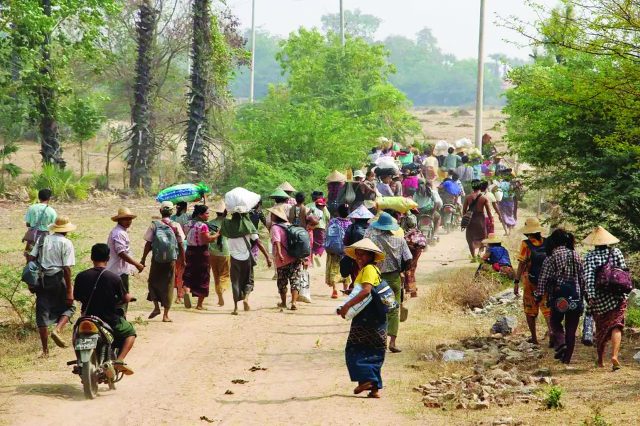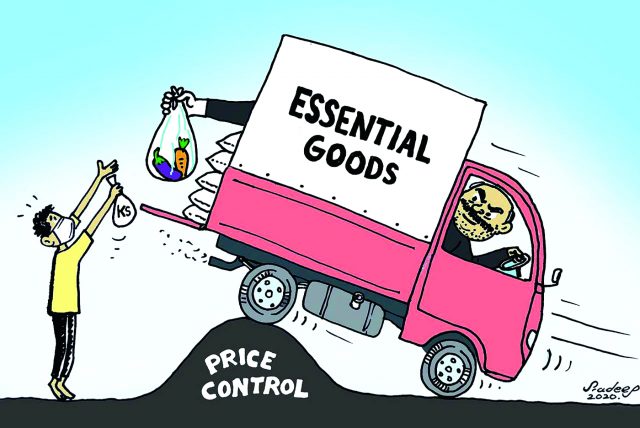Everyone thought it was impossible for Lashio to fall. 100% of the people MI had spoken to, prior to the fall of the city, concurred on the inconceivability of it. Yet, it happened. With an airforce squadron, one regional command centre, one resident double digit light infantry division (with two other divisions coming in as reinforcements), an artillery unit, an armour outfit, battlefield engineers (BE), ground engineers (GE) squads and a medical detachment plus a military hospital, what more do you need to achieve victory?? Sometimes, against all the forces in our favours, all the stars became mis-aligned. Perhaps destiny cannot be avoided.
To get to the bottom of this, MI interviewed one of the well-known and reasonably well-connected lady from Lashio, who has to run for her life during the fall of the city. Her escape to Yangon is an adventure itself, worthy of at least a minor Hollywood flick or a Discovery episode. This may not be as exciting as Anne Frank’s diaries, but at least, it carries the elements of truth and scars of the civil war.
When was the first targeted attack on Lashio?
It happened on the night of July 2.
Is it because the artillery shells fell on that day?
No, no. It is on that day that we started hearing the gun shots due to the clashes between Tatmataw (Myanmar military) and the rebels.
How far are these initial clashes from the city centre?
About 5 to 6 miles.
How far do you live from the city centre?
We live in the western side of the city, near the suburbs, on the way to Namtu (another town). It’s between the golf course and the end of the city perimeter.
What happened next?
The next notable event happened on July 3., when rockets started to fall onto the city. It happened around 07:00. They (the rebels) started shooting these rockets directly at the residential areas. One of the first casualties was when one of these rockets hit one house in residential area along a main road, killing all six family members. They were Kachins (an ethic minority) and were having breakfast together.
How do you know for sure, these rockets are not from Tatmataw?
I can say with 100% certainly that these are not fired by Tatmataw. These types of rockets are used only by EAOs and the habit of firing these reflects also their style of attacks.
Are you saying Tatmataw does not have these types of rockets?
I do not if they have these or not. But we have experienced previous attacks of similar nature carried out by TNLA (Ta’ang National Liberation Army) ethnic rebels.
So you know which groups are attacking the city?
Yes.
How do you know?
The news that MNDAA (Myanmar National Democratic Alliance Army) and their northern rebels alliance, will continue their attacks on Lashio, after Tatmataw surrender in Kohkang, has already been out for at least two months. They did acknowledged that Lashio is strong, well defended and would be difficult to conquer. But they have all agreed to proceed with the salient.
Such reports and bulletins started appearing in Facebook pages and the rebels’ media channels, around two months prior to the attacks.
When they posted such messages in their media, is it in Chinese, Shan or Burmese languages?
It is all in Chinese.
How you are read these since you do not know Chinese?
There are writers who translated news from Chinese language based media into Burmese language, especially in Muse (Ruili). The newspapers and traders in Muse translated these news and posted them on Facebook in both languages. Whatever the announcement, there would be a translated version, whenever it came out. Hence, we have the privilege of understanding these messages.
Who is inside these MNDAA grouping?
The northern rebel pact comprises of MNDAA, TNLA, AA (Arakan Army) and KIA (Kachin Independence Army) typically. Now PDF terrorists have joined them. So altogether five. How do I know – well you can see their uniforms. I also did asked them and looked at their flags along my escape route.
How many rockets they shot on average?
The rocket attacks started on July 3. At least 50 rockets fell on that day. There is no specific targets. They anyhow shot at any house or building. They did not bother where these rockets land. These rockets were all coming from the western side, Namtu area.
How do they get to Namtu?
The jungles around that area are occupied by Tanaung people. As I have said before, their army TNLA’s main weapons are these rockets. Its only about 7 miles from my house. The other groups attacked from the East and North East.
How about the South, along the Lashio – Pyin Oo Lwin highway?
I live in the West. The highway is towards the South-West. MNDAA Kokang forces attacked from the South-East and North-East. The North-East area is directly connected towards the Kokang region. The Western side is Ta’ang controlled area. They even announced via their media channels that they would begin their attacks with full force from that sector.
Tatmadaw did try to blockade their entry points from the West. Hence instead of trying to attack head on, TNLA started with the rockets campaign raining over the whole city. Their indiscriminate firing caused many civilian casualties and significant damages to properties, including religious buildings, pagodas, schools, hospitals and bazaars. After three or four consecutive days of such attacks, people began to panic and decided to abandon the city.
How is the movement of civilians?
Most of them thought of abandoning the city only about two or three days after the clashes. That’s when the rocket shower started. On the 8th of July, all the government offices and branches were notified to desert the city. The news of that spread and civilians also realised that they must also turn their backs on their home town.
When the government notified their branches and offices to move to Taung Gyi, did it mean that the government knew in advance that they would lose?
I do not think it is because of that. I think because of the dangers of short-range projectiles. They are unpredictable and can result in major casualties, I believe. Tatmadaw knew from the start that they would not lose just because of rocket attacks alone. We have experienced such attacks prior to this.
When no-one thought Lashio would be lost, why do you think this happened? I want to ask about the role of the air force first. Are there targeted bombing on enemy bases? Any civilian casualties or friendly fires due to the air support?
Until now, I have not heard of civilian casualties due to direct attacks or bombing by Tatmadaw. Normally the bombing happened at late evening or at night. There would always be a reconnaissance flight around 17:00. Thereafter, another blue fighter would follow suit, probably for arial photography. I think that plane communicated with the artillery unit on the ground, with respect to the specific targets. After the artillery fire, the bombing campaign ensued with fighter bomber aircrafts. Because of such co-ordinated shelling, the casualties suffered by MNDAA counted into thousands. Body count by TNLA amounted to hundreds too. Hence their initial attacks were repelled.
What was the next crucial event?
They started attacking with the ground forces after initial days of rocket barrage. But all the rebel salients got pushed back as Tatmadaw has a monopoly on air to ground assault and had stationed their forces at critical junctures. So the insurgents were unable to secure a breakthrough using the normal routes.
Then, how did they end up inside Lashio?
The guerrillas wore their respective uniforms during the day and wore civilian clothes at night. Since the town is not a walled city, there is no clear division between the villages, jungles, mountains and the city itself in terms of the perimeters. There were heavy downpour at night during the period in question and taking advantage of the darkness and incessant rains, the rebels seeps into the urban areas in the middle of the night.Their forces trickled down from every corner of the hills and connected with their sympathisers and supporters already stationed in the city. The small arms had already been smuggled into the city by then. (Reminded us of the Tat Offensive, during Vietnam war).
If that is the case, it is as if they are rocket bombing their own ethnic people?
Not really, they seemed to have communication among themselves. They apparently knew when the rockets attacks would begin and end. Furthermore, the initial success and advantage by Tatmadaw evaporated when these rebels started shelling back Tatmataw posts using the same powerful artillery used by the former.
How did they managed to secure such heavy artilleries?
It happened as a direct result of surrender of Kokang, after 1027 event, referring to October 27, when MNDAA started attacking the Tatmadaw units stationed in Kokang area. The General there gave all up without firing a shot. He has been court martially and sentenced to more than 10 years of prison term.
He just not only surrendered himself and personnel under his watch, but also gave up lots of modern heavy artillery, including 155cm howitzers and armour units. Such a brave man indeed, committing a criminal breach of trust, placed upon him by Tatmadaw and the people of Myanmar and treason of the highest order.
MNDAA forces brought along these weapons with them and started counter ordinance fire. That started on the July 8. By then, all the government offices and branches have been ordered to leave for Taung Gyi (capital of Shan State). That’s when the horror and hysteria set in to the minds of people. The sounds of these howitzers were simply unbearable.
Why the air force cannot attack the origins of these battery units?
Yes they did attack. But the thickness of the jungle and the invisibility due to the weather condition impair the effectiveness of such an onslaught. Inability to distinguish between ordinary villagers and the insurgents made the operation very arduous.
When did the rebel forces completed accumulating sufficient personnel within the city to start launching an urban warfare?
By the July 10, the number of rebels within the city has more or less exceeded the ordinary civilian population. Houses are in disarray now due to the rockets bombardments and with many new faces coming and staying next to you, the residents realised that it is now or never. No market, no food, no electricity, no cell service, only sounds of howitzers and gunfire. Water is abundant at least. The phone lines went off from July 15 onwards.
When did you run then?
I was a bit overly optimistic I supposed. On July 23, we had our breakfast and closed off all the doors of the house. We lived in Bogyoke village (village for high ranking military personnel). We ourselves are not VIPs though. That village is always guarded by a squad of infantry men. The rebel ground forces started engaging them on July 23. Then we realised for sure the civil war has reached our doorstep.
The highway to Pyin Oo Lwin has been bulldozed by the enemy months ago. They did announce on their media channels. We only have a Suzuki saloon so going through the jungle is not an option for us.
What happened to those without their own private transport?
They have to cramped into light trucks like canned sardines, to reach to Taung Gyi via an alternate route. It cost between 5 and 7 lakhs ($100 to $125) per person and $300+ if you are renting the whole truck.
How much luggage or personal items can you carry on these trucks?
People simply did not have the luxury to time to pick and choose what they want to carry. Everything happened so fast. We sort of knew we had to leave before the 23rd. But we did have small children in our extended family and we could not take this decision lightly. But as advised by friends from Yangon, we managed to accumulate enough fuel, before things got worse.
And very fortunately, the two small cars that we got were not damaged during the crossfire in our village.
What route did you take?
We did not really get out of Lashio on till July 25. On 23rd, the day that we left our house, I was still hoping that things might get better. So, I only took really important and crucial items and went to another part of town, where there were less fighting and lived in a friend’s house over there. Yet, war follows and the sounds of heavy artillery and amour cannons made everyone horrified at the thought of getting a direct hit.
Any armoured units within the city perimeters?
Yes, we have armour, artillery, air force and North-East regional command centre in Lashio. But the attacks were scary.
How did you eventually escape?
On 25th, two days after staying at a friend’s house, the fighting got more intensive, the shelling become more frequent and the sounds of gunfire got louder as the clashes reached our doorstep. Even the medics, ground engineers and other auxiliary platoons had to joined the relentless exchanges. They were attacked from all fronts within the city itself.
We eventually took the courage to put whatever belongings that we got onto our two cars and put up the white flags, made of cut clothing, on them. Together with two cars of our friend, we left together from her house. We headed south. Near the south gate, we met other cars waiting up for company too. We team up with them and lead by young men from the city, we finally leave town in a row of ten cars.
Where did you go afterwards?
We head towards the road that would lead us to Taung Gyi. Lashio is in Northern Shan State, whereas Taung Gyi is in the South. Along the way to reach that road, we had to pass by a lot of check points, all manned by MNDAA soldiers. But they did not stop us. We did not see anyone from Tatmadaw side anymore, all along the 60 mile stretch to reach towards the main road to Taung Gyi. They checked our ID cards, asked where we were going and let us through. They checked the passengers. If they suspected the travellers were soldiers, policemen or civil servants they would detain them.
How could they possibly know if you are a civil servant?
I guess civil servants are better looking and more smartly dressed than most of us.
Why did you not escape towards nearer Pyin Oo Lwin and head to Taung Gyi instead?
Oh no, the rebels did not let the people cross the Goat Hteik Bridge. Seik In bridge has been demolished. Kyin Te bridge likewise. Since the Oct 27, 2023 attacks. Once we drove around 60 mile, we reached an area controlled by RCSS (Restoration Council of Shan State), one of the larger EAOs in Myanmar. We slept in a monastery for one night and continued our journey towards Taung Gyi early in the morning.
It seemed Lashio is heavily defended by all branches of the Tatmataw. Why did we still lose?
The main reason is treachery by Nyi Nyi Htut. I think he is of colonel rank, in charge of military communications. His treason is of such magnitude that brought embarrassment to the whole nation. He did AWOL, brought along with him all the important military facts and information and defected to the dark side. Plus he sabotaged all the military communication links before turning traitor. After he did that, the air, ground and other manpower support could no longer be directed towards the areas that require supporting fire. The main cause is the collapse of internal communications system of Tatmadaw. After that, air support was no longer available to our ground forces.
How about walkie talkies used by Tatmataw?
That system was also totally compromised. So the enemy could listen to whatever the Tatmadaw was communicating among different units. As I mentioned, the reason we lost is due to the destruction of lines of communications and leakage of top secret and battle-critical information from Tatmadaw, due to treason by a single high-level individual. So the enemy knew exactly where our forces are and even where the regional commanding general is stationed. Thats how he was captured. Just like a bird or a chicken.
So the regional commander of the North-Eastern command was among those captured by the rebels?
Yes, he was. He, his assistant and another colonel under him. These are three main senior personnel that they got and used eventually for exchange as POWs (Prisoners of War).
Who are they being exchanged with?
Oh, they are already back in Nay Pyi Taw now. When the Airforce bombed the rebel positions, there were a lot of casualties as well as a lot of POW captured. 57 altogether, were captured alive. The strange thing is that none of these 57 POWs can speak the Kokang language. They only spoke Chinese. This is just an example. The number of POWs exchanged is actually more than 57. They are in fact, mercenaries hailed from Yunnan province of China. And some of them are professional snipers.
We also got snipers on our side, right?
Yes, but their snipers were better. The reason is also due to the collapse of the communication system. The rebels had access to internal communications of Tatmadaw. So their targeting is far more superior to ours.
When they announced they had captured Lashio for the first time, they just came to the front of North-Eastern regional command and took some photos to post on social media. At that time, the command has not been captured yet. Tatmadaw was still able to defend. Then the rebels attacked the medics, medical corps and the military hospital. But these personnel there are without any weapons. But they attacked anyway. The hospital is also used by the civilians, since Lashio do not have a proper hospital for civilians.
Did they attack the hospital staff and patients?
Yes, it happened during their attack on the military hospital. All the injured and hospitalised military personnel were murdered on the spot. Four pregnant ladies also got their throats sliced and executed. The children were also slaughtered. This is the worst massacre of all. I have seen the photo evidences of that. These victims were totally unrelated to the conflict. They were all butchered by the rebels.
So the three top commanders have been exchanged with the 57+ mercenaries?
Not just the top three. There were many POWs from the fall of North-Eastern regional command. Many more were captured during the attack at the hospital too. The insurgents also broke open the jail and released the prisoners.
How many do you think we lost from Tatmadaw side?
May be into hundreds. But the rebels suffered more losses in terms of body count. Probably in thousand. Mostly from Kokang.
Why do you think they keep the soldiers as POWs while murdering the medics and patients at the hospital?
One of the reason could be the soldiers may be of certain rank, while the patients were people of insignificance. May be they also do not want to deal with those who are not able- bodied. I am most upset about the attack on the hospital. They went on top of one of the hotel and fire a rocket directly at the hospital, on purpose. The pregnant ladies murdered included Kachin and Kayin ethnic women. These women do not have money to go to private hospital or clinics. That’s why there were there at the military hospital, as it provided free care. Look at their fate now.
